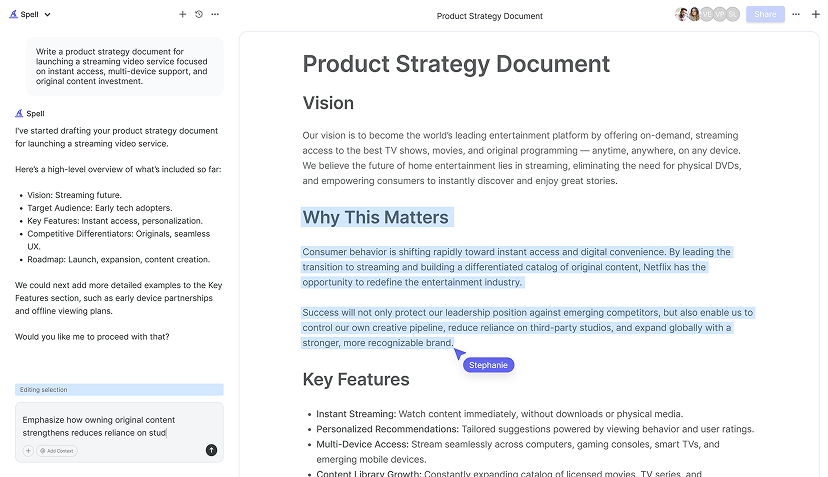Writing a 10-page argumentative research paper might seem like a marathon, but with the right approach, it's more like a series of manageable sprints. We'll break it down into steps, tips, and examples to make this task feel less daunting and more approachable. From selecting a topic to crafting a compelling argument, you'll learn how to produce a paper that not only meets the page count but also stands out for its quality and clarity.
Picking the Right Topic
The first step in writing any research paper is choosing a topic, and it's crucial to pick one that is both interesting and researchable. Imagine you're browsing a bookstore. You're more likely to pick up a book with a catchy title that piques your curiosity. Similarly, your paper's topic should captivate both you and your readers.
Start by brainstorming general areas of interest, then narrow them down to specific questions or issues. For instance, if you're interested in technology, you might focus on the impact of social media on mental health. Make sure the topic is not too broad (e.g., "The Internet") or too narrow (e.g., "The Effect of Instagram on One 14-Year-Old in Iowa").
Here's a quick way to test your topic:
- Can you find enough credible sources to support your argument?
- Is the topic open to debate, allowing for a clear argument to be made?
- Does it interest you enough to sustain your attention for 10 pages?
If you can answer "yes" to these questions, you're on the right track. And remember, a well-chosen topic makes the writing process much smoother.
Crafting a Strong Thesis Statement
Your thesis statement is the backbone of your paper. Think of it as the GPS for your argument, guiding you and your readers through the paper. Without a clear thesis, your paper can quickly become a tangled web of ideas.
When crafting your thesis, make sure it's specific and debatable. A thesis like "Social media affects society" is vague and lacks direction. Instead, try something like: "Social media platforms, while connecting individuals globally, contribute significantly to the increase in anxiety and depression among teenagers." This statement is clear, specific, and opens up a path for argumentation.
Thesis Example:
"While social media platforms foster global connectivity, they also contribute significantly to the increase in anxiety and depression among teenagers, necessitating new approaches to digital wellness education."
Once your thesis is ready, it becomes your paper's north star, keeping your argument focused and aligned.
Researching Like a Pro
Research is the foundation of any argumentative paper. It's the evidence that supports your thesis and strengthens your argument. Start by compiling a list of keywords related to your topic, then use these to search academic databases, journals, and credible websites.
As you research, take notes and summarize key points in your own words. This not only helps you understand the material better but also prevents plagiarism. A handy tip is to organize your notes by themes or arguments to make writing more straightforward later.
Remember to evaluate your sources critically. Ask yourself:
- Is this source credible and up-to-date?
- How does it support or challenge my thesis?
- Can I use this source to build a counterargument?
Effective research is not just about collecting data but understanding and interpreting it within the context of your argument.

Structuring Your Paper
Now that you have your research and thesis, it's time to structure your paper. A well-organized paper flows logically from one point to the next, making it easier for readers to follow your argument.
A typical structure for a 10-page argumentative paper includes:
- Introduction: Introduce the topic, provide background information, and present your thesis statement.
- Body Paragraphs: Each paragraph should focus on a single point that supports your thesis. Use evidence from your research to back up your claims and address counterarguments.
- Conclusion: Summarize your main points, restate your thesis in light of the evidence presented, and suggest potential implications or further research.
To help with organization, consider creating an outline before you start writing. This will serve as a roadmap, ensuring you cover all necessary points and maintain a logical flow.
Writing Compelling Introductions
Your introduction is the first impression your paper makes, so make it count. Start with a hook that grabs attention. Perhaps an intriguing fact, a question, or a brief anecdote. This sets the stage for your argument and encourages readers to continue.
After your hook, provide some context or background information on your topic. This helps readers understand the significance of your argument. Finally, clearly state your thesis to set the direction for your paper.
Introduction Example:
"In a world where digital communication reigns supreme, social media has become a double-edged sword. While it connects friends and family across continents, its darker side emerges as studies increasingly link it to mental health issues in teenagers. This paper argues that social media platforms, although fostering global relationships, contribute significantly to rising anxiety and depression among teenagers, necessitating a reevaluation of digital wellness education."
Remember, a strong introduction does more than just introduce your topic. It sets the tone and direction for the entire paper.
Developing Argumentative Body Paragraphs
The body of your paper is where the real work happens. Each paragraph should focus on a single point that supports your thesis, with evidence to back it up. A common structure for body paragraphs is:
- Topic Sentence: Clearly state the main point of the paragraph.
- Evidence: Provide data, quotes, or examples that support the point.
- Analysis: Explain how the evidence supports your point and connects to your thesis.
- Transition: Smoothly lead into the next paragraph's point.
Body Paragraph Example:
"One major reason social media contributes to anxiety in teenagers is the constant comparison it encourages. Studies show that teenagers who spend more than three hours daily on social media are more likely to report feelings of anxiety and depression. This is largely due to the 'highlight reel' effect, where users showcase only the best aspects of their lives, leading others to feel inadequate. Thus, while social media can connect people, it can also isolate them, exacerbating mental health issues."
Each paragraph should build on the last, creating a cohesive and persuasive argument.
Addressing Counterarguments
No argument is complete without acknowledging the other side. Addressing counterarguments shows that you've considered multiple perspectives and strengthens your position by preemptively answering potential criticisms.
When presenting counterarguments, be fair and objective. Then, refute them with evidence and reasoning that supports your thesis. This not only bolsters your argument but also demonstrates critical thinking skills.
Counterargument Example:
"Critics might argue that social media is merely a tool and cannot be held responsible for mental health issues. While it is true that social media is not the sole cause, it is an enabling factor. Research indicates that its design, aimed at maximizing engagement through likes and shares, can lead to addictive behaviors and unhealthy comparisons. Thus, while social media may not be the root cause, its influence cannot be ignored."
By thoughtfully addressing opposing views, you make your argument more robust and credible.

Concluding Your Paper Effectively
The conclusion is your last chance to make an impression, so make it count. Start by reinforcing your thesis, then summarize the main points of your argument. Avoid introducing new information or arguments here. Instead, focus on leaving a lasting impact.
Consider ending with a call to action, a rhetorical question, or a thought-provoking statement. This leaves readers pondering your argument long after they've finished reading.
Conclusion Example:
"In conclusion, while social media platforms have revolutionized communication, their unintended consequences on mental health cannot be overlooked. By recognizing these challenges, educators, policymakers, and tech companies can work together to create a healthier digital environment for teenagers. As we continue to embrace the digital age, it is imperative to prioritize mental wellness alongside technological advancement."
A strong conclusion ties together your argument and underscores the importance of your thesis.
Editing and Revising Your Paper
Writing is only half the battle. Editing and revising are where your paper truly shines. Start by taking a break after your first draft. This gives you fresh eyes when you return to it.
Read your paper aloud to catch awkward phrasing or unclear sections. Check for consistency in your argument and ensure that each paragraph supports your thesis. Pay attention to grammar, punctuation, and citation style.
Consider peer reviews or feedback from a teacher or mentor. They can provide valuable insights and catch errors you might overlook. And if you're looking for a faster way to polish your document, Spell can help you refine your paper efficiently and effectively.


Formatting Like a Pro
Proper formatting gives your paper a professional appearance and helps readers follow your argument. Check your assignment guidelines for specific formatting requirements, such as font size, margins, and citation style.
Common formatting styles include APA, MLA, and Chicago. Each has its own rules for in-text citations, references, and layout. Consistent and correct formatting shows attention to detail and adherence to academic standards.
If formatting feels overwhelming, remember that Spell can help you apply the correct formatting, ensuring your paper meets all specifications.
Preventing Plagiarism
Plagiarism is a serious academic offense, so it's crucial to credit sources properly. Always cite ideas, quotes, or data that are not your own. Use quotation marks for direct quotes and include proper citations for paraphrased information.
Keep track of your sources as you research, and use citation tools or software to streamline the process. If you‘re unsure about whether something requires a citation, it‘s better to err on the side of caution and include one.
By acknowledging the work of others, you not only avoid plagiarism but also enhance the credibility of your own argument.
Final Thoughts
Writing a 10-page argumentative research paper is a journey that involves careful planning, research, and revision. With these steps, you'll be well-equipped to tackle the task and produce a paper that stands out for its clarity and persuasiveness. And if you're looking for a way to streamline the writing process, Spell can help you draft, edit, and polish your work quickly and efficiently.






